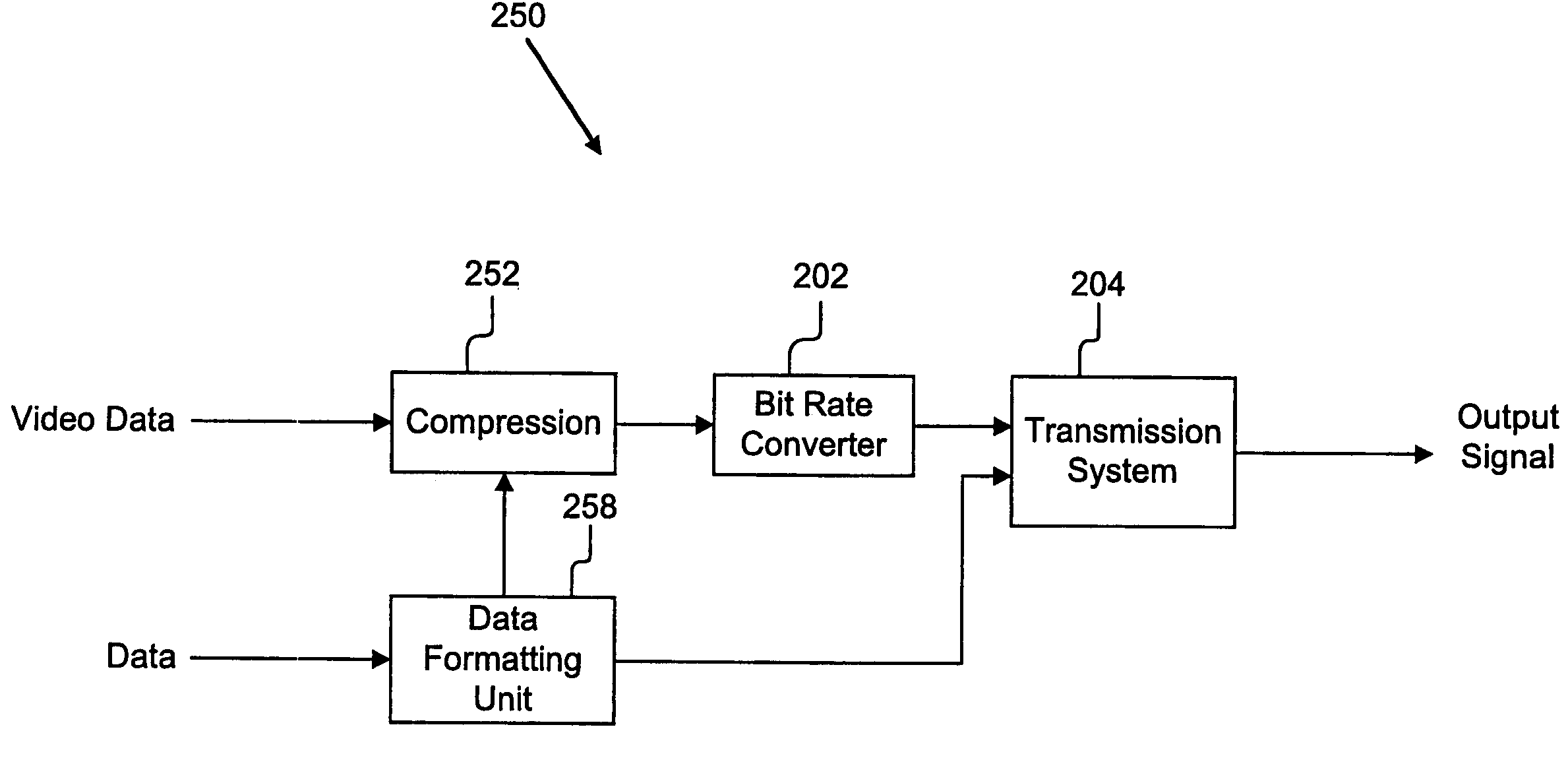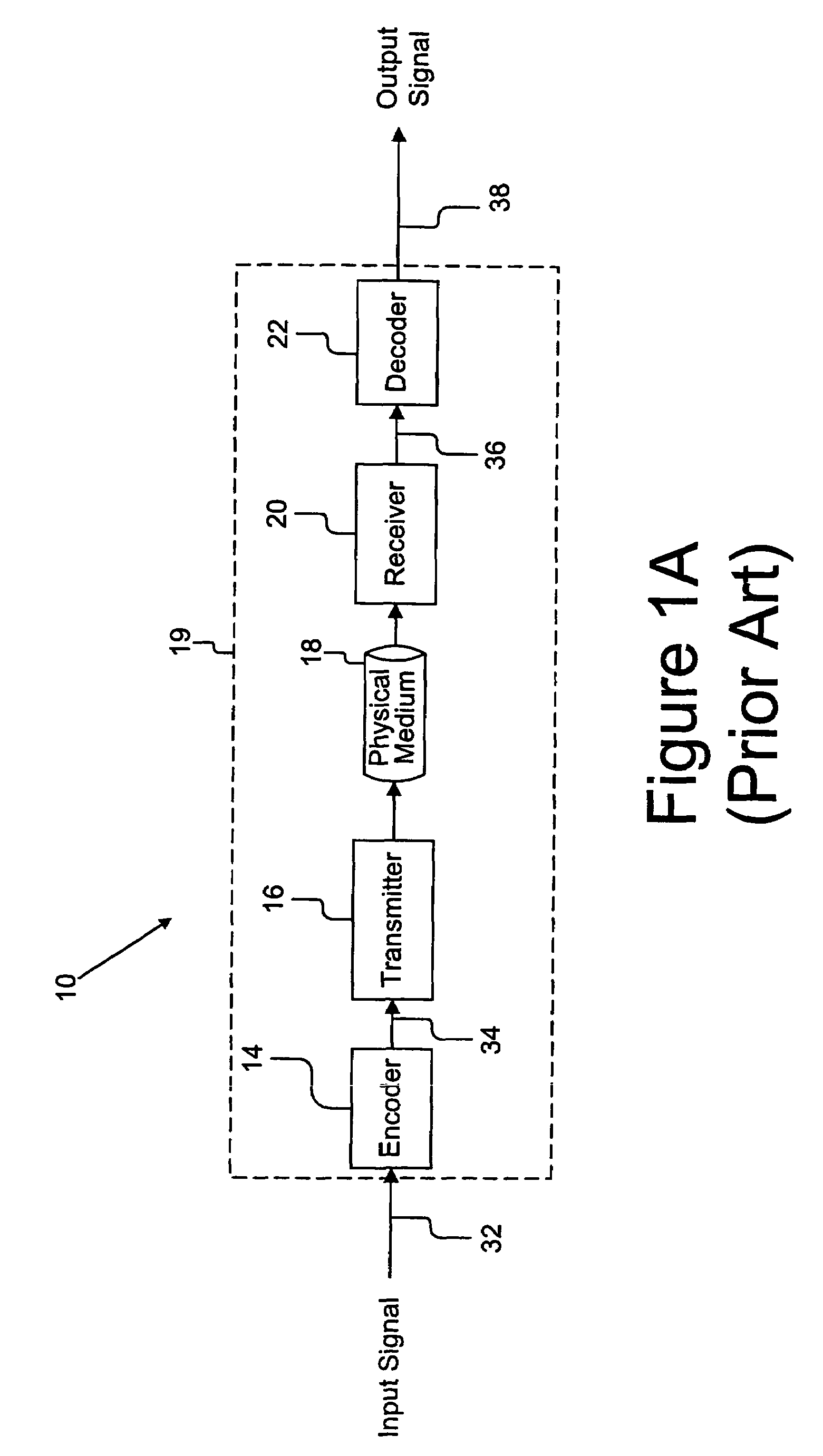System and method for transporting a compressed video and data bit stream over a communication channel
a technology of compressed video and communication channel, applied in the field of communication channel and system for transmitting data, can solve the problems of loss of video textural information that cannot be recovered, the inability of communication channels to handle video data transportation, and the need for much more bandwidth
- Summary
- Abstract
- Description
- Claims
- Application Information
AI Technical Summary
Benefits of technology
Problems solved by technology
Method used
Image
Examples
first embodiment
[0051]Referring now to FIG. 4, a bit rate conversion device 202a / 304a according to the present invention is shown in more detail. The present invention advantageously uses bit rate conversion to match the rate of the bit stream to the capacity of the channel 204. Bit rate conversion of compressed video bit stream refers to the process performed on a pre-compressed video bit stream which, when applied to the bit stream, results in a different bit usage than the originally compressed bit stream. In a typical scenario (see FIG. 2C), the new bit rate is smaller than the original bit rate, but sometimes the resulting bit rate can also be greater than the original bit rate. When the digital video is first compressed, the encoder must assume a particular bit rate profile, whether it is constant bit rate (CBR) or a variable bit rate (VBR). The word “profile” refers to the fact that bit rate may not be constant, but variable under certain constraints, such as peak bit rate, average bit rate,...
second embodiment
[0064]Referring now to FIG. 5, a second and preferred embodiment of a bit rate conversion device 202b / 304b according to the present invention is shown. The bit rate conversion device 202b / 304b is adapted for use on a MPEG-2 transport stream. the bit rate conversion device 202b / 304b preferably comprises a separation unit 500, a de-multiplexer 502, a elementary stream bit parser 504, a DCT VLC decoder 506, a motion vector VLC decoder 508, an auxiliary information decoder 510, a rate controller 512, a plurality of modification units 514, 516, 518, a DCT VLC encoder 520, a motion vector VLC encoder 522, an auxiliary information encoder 524, a stream bit multiplexer 526, and a transport multiplexer 528.
[0065]The separation unit 500 first receives the pre-compressed video data stream. The separation unit 500 is similar as has been described above, and produces a video transport stream, an audio stream, and an data stream. The audio stream and data stream are output directly to the transpo...
third embodiment
[0080]Referring now to FIG. 9, a system 900 for transporting video data integrated within the communication channel, in particular, for a rate adaptive asymmetric digital subscriber line (RADSL), is shown. The present invention is directed toward the integration of bit rate conversion schemes with ADSL rate adaptation feature to achieve relatively lossless transmission. Therefore, one key element of the invention is to create a synergy between the bit rate conversion of compressed video bit stream and the use of RADSL to transport compressed video bit stream, especially the transform coding based (such as MPEG) compressed video bit stream. Throughout the present application, the term bit rate conversion has been used so as not to preclude the possibility of upward bit rate conversion, but in general practical applications, the need for downward rate conversion far exceeds the need for upward rate conversion. Upward bit rate conversion can be achieved quite easily in different layers...
PUM
 Login to View More
Login to View More Abstract
Description
Claims
Application Information
 Login to View More
Login to View More - R&D
- Intellectual Property
- Life Sciences
- Materials
- Tech Scout
- Unparalleled Data Quality
- Higher Quality Content
- 60% Fewer Hallucinations
Browse by: Latest US Patents, China's latest patents, Technical Efficacy Thesaurus, Application Domain, Technology Topic, Popular Technical Reports.
© 2025 PatSnap. All rights reserved.Legal|Privacy policy|Modern Slavery Act Transparency Statement|Sitemap|About US| Contact US: help@patsnap.com



